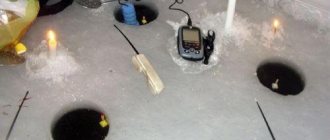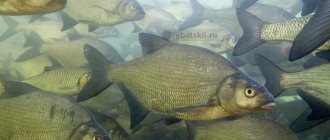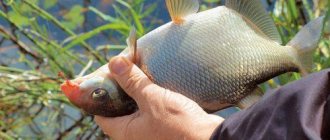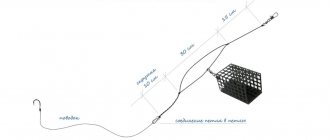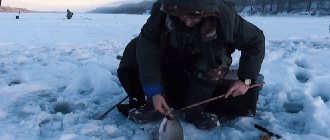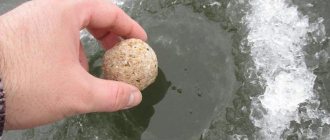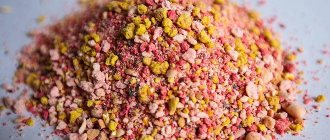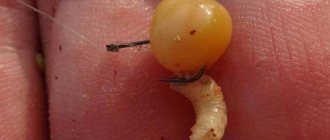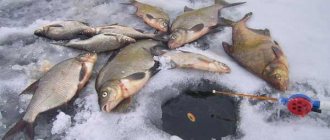In the fishing community there continues to be an eternal buzz about the choice of working bait for bream in winter. Forums, websites and videos offer the best recipes, and anglers are in search of the secret ingredient that will bring good luck. The information space is overflowing with information. Let's figure out how to make the right winter bait for bream with your own hands.
The right approach to bait
Everyone is looking for the best bait for bream. But the bottom line is that there is no “magic” recipe. A particular mixture may be best in certain fishing conditions (and water).
Wrong approach:
- Mix a bunch of the “best” ingredients.
- Unload it into the hole (and immediately).
- Wait for a bite.
This method can work, especially for small crucian carp and roach.
The right approach:
- Study the bottom topography and features of the reservoir
- Make small feedings of reconnaissance holes.
- Identify the most promising of them.
- Stop at the best place and continue fishing there, periodically feeding a little.
- Continue searching if there is no bite.
On an unfamiliar reservoir, use the basic composition of the mixture, without any frills, especially for bream (if the specific worker is unknown right here and now). And only if it is possible to carry out many fishing trips on this reservoir through experiment, find out the best consistency and flavor.
Our article will talk about this. The composition of the bait is important, secondly. Firstly, you need to know how to feed bream in winter. In the cold season, it is important not to overfeed or saturate the fish. You need to keep the fish near the hole for some time, force it to rummage in the bottom where the bait of the fishing rods lies. What kind of bait does bream like in winter? There is only one answer - alive. The movement of larvae and crustaceans in the mud attracts this fish from afar. And plant components are used as an alternative if there are not sufficient amounts of live bait available.
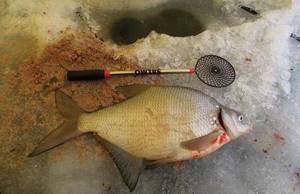
The principle of action of bait for bream
Fans of bream fishing are unlikely to go fishing without bream bait in winter, since you can sit for quite a long time and, as a result, not wait for a single bite. And with aromatic porridge or other bait mixture that the bream likes, you can catch large specimens.
The principle of action of baits for bream in winter is the same as in summer. Fish come from the surrounding area to the aroma of food, and if it likes the food, it will stay nearby and feed for some time. This is where the fisherman’s task is to interest the hungry bream with bait.
Component composition
In order to correctly answer the eternal question of which bait is better, you need to understand some of the basics of the life and nutrition of bream. These aspects are described in more detail in the article on our website about catching bream in winter, as well as in the publication about searching for this fish in rivers. A school of bream overwinters in a hole, periodically making raids on nearby promising places (edges, tables, colonies of mollusks), where they feed, tearing holes at the bottom down to the hard layer. Based on this, and also taking into account the influence of the winter period, the principles for preparing bait are as follows:
- The mixture needs to be attractive to the fish, but hungry enough. The fish should not gobble up the porridge on both cheeks, but should fussily look for food in the fishing zone. Proper feeding forces the flock to actively feed and dig the ground in search of bloodworms.
- Even if it’s not much, the mixture should contain particles that the fish can eat. Their quantity is small so that the bream does not switch entirely to searching for and eating them.
- The nutritional value of groundbait in terms of protein is required in winter more than in summer. Fish saves energy. She should get more calories for fewer movements.
- Unlike winter bait for roaches, the mixture for large bream should not generate a lot of dust and produce a lot of small suspension - this will attract small things, which simply will not allow the bloodworms on the hooks to wait for the bream school to approach.
- The main component is an animal, and a living one at that. Even a small pinch of live bloodworms delivered to the bottom in the fishing zone will bring more benefits than the rest of the plant bait.
A hand-made catch bait for winter bream only works if used correctly. Whatever composition the mixture contains, it will not work if used incorrectly.
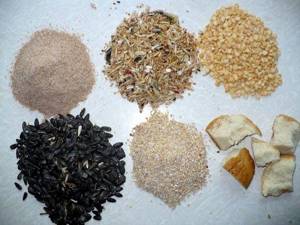
Do it yourself or buy it, pros and cons
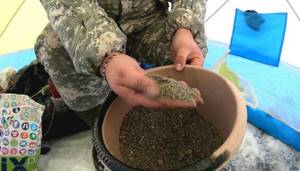
Should I buy bait mixture or make it myself at home from available ingredients? Both options have positive and negative sides. The factory mixture makes the task easier. There is no need to think about the composition, mix the components, or monitor their proportions. However, it has disadvantages:
- Cheap food is ineffective. You will have to buy an expensive premium brand that is respected by advanced breamers.
- Many commercial feeds are designed with universal properties, so they may not work at all on certain bodies of water.
- Purchased bait does not contain the main winter component – the animal. And since you still have to add it to the mixture, it is much wiser to prepare it yourself from the beginning.
Recommended reading: About bait for fish
Homemade bait is cheaper than purchased bait. The fisherman gets the opportunity to independently select the components, their proportions, experiment with fraction sizes, colors, and flavors. In any case, making the mixture with your own hands is much more interesting than simply purchasing it at a fishing point.
Animal part
A good winter bait for bream should contain a live component, this is especially true in winter. If a fisherman has a fair supply of food bloodworms (limannik) or mormysh (it can only be used in those reservoirs in which it lives and is a natural food), then such food is used in its pure form, there is no need to invent anything else. When the supply of animal food is limited, bait for bream consists of a plant mixture with the addition of some animal additives. In the absence of these, even adding chopped worms and maggots, or at least starting to create molasses with the smell of bloodworms, will give the desired effect.
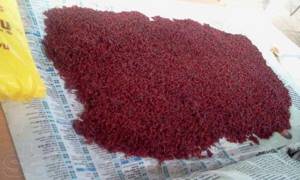
Feed bloodworm
Feed bloodworm, or limannik, is the most common and effective animal supplement. It is better to add live food bloodworms to bream bait for winter fishing, rather than large baited ones. Then the bream will definitely appreciate the large larvae on the hooks, among the small food ones. In large cities, bloodworms are sold; in rural areas, you can wash them yourself and store them in the refrigerator. Even 100-200 grams of such an additive in a plant mixture will work better than any flavorings. Living larvae will burrow into the bottom and begin to create micro-oscillations, which the sensitive side line of the bream detects from several tens of meters. By sometimes adding a pinch to the hole, you can keep the flock in one place for a long time.
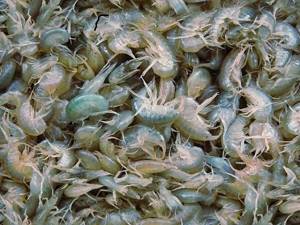
Amphipod mormysh
Breakdown and addition to the plant mixture
For bait, food bloodworms are broken down with starch or breadcrumbs. This is done so that the larvae do not stick together into clumps and die from overcrowding. When adding to a plant mixture, you need to mix carefully, without crushing the larvae, since it is the living, moving bloodworms that create an attractiveness for fish. You can also feed bream with larvae, if there are a lot of bloodworms and there is no goal to save money.
Live jig
You can also feed bream with live jig. This is especially true where there is a lot of crustacean, and it is not difficult to get or buy it. It is delivered to the bottom by a regular dump truck. When catching bream in the current, a special feeder is made with holes sufficient for the crustacean to emerge from it. When it reaches the bottom, the jig gradually leaves the feeder and hides on the bottom nearby, forming a feeding spot.
During the current, a feeder in the form of a container with holes corresponding in size to the dimensions of the crustacean is often used. When the feeder is in the water, the jig gradually leaves the container, drifts a little downstream and hides in the bottom folds of the relief. This creates a feeding area that is attractive to bream.
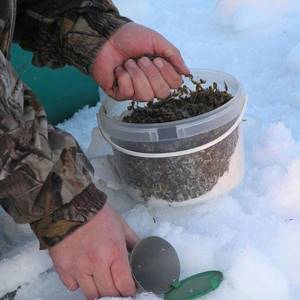
Plant part
Basically, fishermen prepare vegetable bait for bream at home with their own hands. It's not difficult, you just need to understand the nuances for this particular fish. There are thousands of recipes; it is recommended to start experiments with basic things, without breaking the overall system of proper complementary feeding.
Composition of winter bait:
- The basis.
- Flavors.
- Special additives (sweeteners, salt, molasses, etc.)
- Animal components.
- We have already discussed live supplements; let’s focus on the first three points.
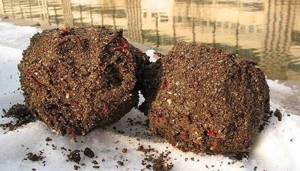
The basis
The base is usually used undercooked cereal, washed under cold water to remove gluten (for crispness). Then it is mixed to the required consistency (the balls are molded, but when pressed they crumble) with breadcrumbs, ground sunflower seeds or pea flour.
We need to talk about peas separately. It is a well-known fact that of the plant components, it is peas that attract bream better. Some anglers boil it until it becomes a puree and then add the main ingredients. This method is suitable for use in feeders when fishing in a current, which will still wash away even a sticky substance. For fishing in still water, it is better to use boiled millet (Salapin porridge for bream in winter) followed by the addition of pea flour. You can grind this flour at home using a coffee grinder from regular peas. Another additive that is sometimes used is ground peanuts. You can use chickpeas instead of peas. These components contain a lot of vegetable protein; adding them to bait gives it additional nutritional value.
Millet is often used as a base. There is no need to reinvent the wheel; pearl barley, egg and other cereals work worse. Thus, we get the basic components from which to build:
- Millet;
- Peas (flour);
- Breadcrumbs (preferably rye);
- Ground sunflower seeds (cake, makha).
Basically, that's enough. By adding a handful of food bloodworms to this mixture, the mass can already be used as bait.
Important! You can't feed too much. Maximum – one dump truck per hole. Then, during fishing, you need to supplement the fish from time to time.
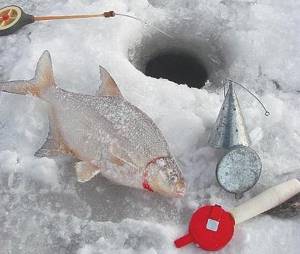
Flavors
Encyclopedias can already be compiled about the correct use of aromatic additives when fishing. There is no need to hunt for some magical super remedy. He's gone. But you can find components that perform well in specific winter fishing conditions. Don’t forget the essence of winter bait – simply to attract the attention of the bream to the fishing spot. The list of flavorings used by fishermen is impressive:
- Vanilla;
- Chocolate;
- Caramel;
- Coriander;
- Sunflower;
- Linen;
- Hemp;
- Cinnamon;
- Fenugreek (fenugreek).
They are found in ready-made store-bought mixtures that you can add to your homemade bait. Sometimes you can find special dips, but using them in winter for their intended purpose - dipping bait - is impractical. When creating a good winter bream bait for ice fishing, anglers should pay attention to cinnamon, fenugreek, flax seeds and dried blood. These flavors have the most positive reviews. You need to add very little of such elements to the bait in winter, literally a drop, just to interest the fish. Do not forget that the main effect is produced by living larvae, and everything else is auxiliary elements.
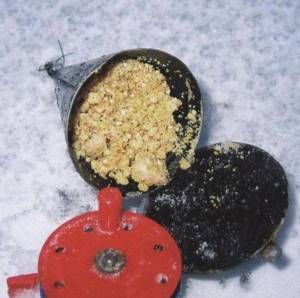
Special Additives
Bream has a sweet tooth, so it would be a good idea to sweeten the winter bait. To do this, you can add sugar, honey or syrup to the mass. A special additive - molasses, in addition to sugar, contains important elements, some of which activate digestion and have a laxative effect. As a result, the fish quickly defecates when feeding and cannot eat. Some sources claim that it is useful to add salt, which speeds up the metabolism of fish in winter, forcing it to eat more.

The best winter bait for bream with your own hands
In winter, less sweet bait is used for bream than at other times.
We have chosen for you the 5 best baits for bream in winter, but the numbering does not mean anything. If after reading you understand that bait is too complicated, and you want simpler results, do not take winter store-bought bait (they are many times weaker than summer bait. For example, the same Dunaev or Traper), take a winter bream bite activator - the result It won’t keep you waiting, and you won’t have to get your hands dirty.
So here we go.
Recipe No. 1. Traditional (breaded and pea)
Also called “recipe from Uncle Vadim”. 4 main ingredients that are integral to this recipe. First, we will list the components, then the preparation (kneading) process, then we will give an interpretation of why each element is needed.
- 500 grams of breadcrumbs . If you don’t have any ready-made ones, you can fry the bread (without butter!) and crumble it.
- 300 grams of crushed seeds (sunflower). You can also replace it with finely roasted peanuts.
- 200 grams of dry oatmeal . Do not rinse! The dust produced during the crushing process is necessary.
- 400 grams (or approximately 1 to 1) pea porridge . The porridge is taken to be as homogeneous as possible WITHOUT adding salt or other elements.
Cooking process:
- First of all, mix breadcrumbs and seeds. Mix until the seed grains are more or less evenly distributed throughout the structure.
- Finely crushed flakes are added to this mass and also thoroughly mixed until smooth.
- Lastly, pea porridge is added. This is done in order to be able to adjust the viscosity and consistency - it should be dry and not stick to your hands (only dust should remain on your palms). Everything is still mixed.
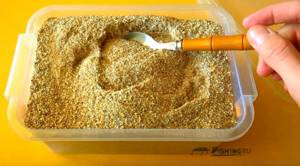
The large fraction of the seeds is necessary so that when it floats to the top, it pulls the fine fraction of the oat flakes with it. Rising from the bottom to the surface, a column of turbidity is formed, which attracts bream. Pea porridge remains at the bottom and attracts bream already there. Therefore, this bait is considered universal. Whether you fish near the surface or at the very bottom, bream will not pass by.
Remember , this bait is suitable for fishing in weak or absent currents. The ideal place for such bait is closed reservoirs with a depth of 3-5 meters.
If the bait has become too soft and wet, add more breadcrumbs.
Video on cooking at home.
Recipe No. 2. Minimalistic (bloodworm + primer)
Don't just throw the bloodworm into the hole.
Not only is this wasteful, but the bait will also be inaccurate. The advantage of this bait is not only its ease of preparation, but also its effectiveness. For bream in winter, bloodworms are an incredible delicacy.
- Soil (sold at any flower shop);
- Bloodworm;
- To add stickiness (sticking of soil to bloodworms), you can use rye or wheat flour .
Mixing and application:
The primer and bloodworms are mixed directly at the fishing site into small balls ( 3-5 cm in diameter) and thrown 2-3 per hole. Even in a small current, the balls reach the bottom quite accurately above the hole.
The bait has a small attraction radius, but if the bream is nearby, it will definitely be activated.
This bait works well in conjunction with an echo sounder, which gives absolute knowledge of the bottom and the movements of the fish.
Recipe No. 3. Complex feeder
Consistency after adding buckwheat
The following recipe is extremely complex, but most effective. This bait for bream can be used both in still water and in the current.
We will need:
- Soil 100 grams;
- Sunflower cake 100 grams;
- Pumpkin seeds 50 grams;
- Buckwheat 100 grams;
- Pearl barley 50 grams;
- Wheat bran 100 grams;
- Corn flour 100 grams;
- Peas 100 grams;
- Bloodworm;
- Maggot (white, if possible red);
- Anise (optional).
Preparation of bait:
- Sift the soil as much as possible. Less is better.
- Grind the sunflower cake to small grains.
- First fry the pumpkin seeds in a frying pan WITHOUT oil, then also grind and mix with the rest.
- Buckwheat and pearl barley are also fried in a frying pan without oil.
- Pea porridge is steamed or cooked constantly at the same temperature until smooth.
- Everything is mixed, corn flour is sprinkled. Mix again.
- For 1 kg of bait add 1 box of bloodworms (can be ground).
- The maggot is doused with boiling water and added to 1 kg 2 boxes. Ideally, one box will be white maggots, the second – red.
- Everything is thoroughly mixed again.
Lastly, fine anise is added and mixed with the rest. There is controversy over adding it to winter bait for bream, so it's okay if you don't have it.
Pumpkin seeds are used to stimulate the digestion of bream, they do not allow it to get enough .
If possible, use a coffee grinder . She grinds the ingredients more thoroughly and finely.
Recipe No. 4. Blazing simple feeder
It is easy to prepare (it takes a maximum of 10 minutes) and is very effective when fishing for bream.
Such baits are called feeder baits because the bait swims perfectly to the bottom without crumbling, and is evenly distributed over the area. Dusty - because they leave behind a column of turbidity, which attracts bream in winter.
Ingredients:
- Makukha – 300 g – (small crushed);
- Breadcrumbs – 100 g;
- Semolina – 100 gr;
- Bloodworm – 3 boxes.
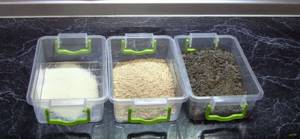
The flour is finely beaten. Everything is thoroughly mixed. Bloodworms are added last. No need to chop. Water is added to the dry mixture until it becomes viscous enough to form balls. The balls are made with a diameter of 4 cm, then placed in the freezer.
It is best to take dry bait with you when fishing, and form balls already there, wetting the bait with water from the reservoir.
Recipe No. 5. Complex beet-bread groundbait
A good way to crush and crush the reagents is a meat grinder.
It is believed that beets (beet molasses, molasses) extremely attractive to bream in winter (and not in winter). There is a special winter recipe for catching bream in winter. Don’t look at the complexity of the preparation, it’s really worth it, because this recipe is rightfully considered one of the best for catching bream in winter.
Ingredients:
- Rye flour – 200 grams
- Wheat flour – 300 grams;
- Yeast - 2 regular sachets;
- Cinnamon – teaspoon;
- Ginger (ground dried) – teaspoon;
- Nutmeg - teaspoon;
- Cloves – 6-7 heads (grind);
- Dry kvass (sourdough) 25 grams.
- Molasses (beet molasses) – 2 tbsp. spoons. (since molasses is difficult to find, you can squeeze beet juice yourself in the same proportions)
- Chicken egg – 1 pc.
Cooking process.
You will have to use an oven for baking. Remember, no oil.
The two flours are mixed by adding water (300 ml of boiling water per 500 grams of flour). Added:
- Cinnamon powder;
- Ground ginger;
- Ground nutmeg;
- The cloves are also ground;
- Dry kvass;
- Chicken egg.
Mix everything thoroughly (preferably with a blender or coffee grinder). The result should be a kind of dough. Cover it with a towel and put it in a warm place for 1-1.5 hours.
After the “dough” has risen , beet molasses is added and kneaded like regular dough. We will bake the resulting flatbread like dough.
on a baking sheet without oil (!). The oven temperature is set to 200 degrees, baking should be for 1 hour 20 minutes. The resulting bread is left to dry for 3-4 days.
When the bread has become completely dry , it is broken into crumbs, a small fraction. The crumbs will give off a spicy, smoky aroma that works flawlessly in cold winter water and is very attractive to bream. In fact, you can feed with this bait, it will be extremely effective, but there are additional options:
- Mixing with soil and flour so that it can be made into balls. Each 4-centimeter ball can also be dripped with beetroot juice (no more than a teaspoon per 1 ball).
- Instead of soil, mix with crushed cake and add bloodworms. This kind of “boilie” will be perfect for fishing without a current.
should not stick to your hands during the cooking stage If this happens, add more flour. The color and consistency of this bait is very similar to the muddy bottom that bream like so much.
Video on winter fishing for bream using bait.
Table of bait application depending on fishing conditions
Despite the table, remember that in winter bream does not like fast currents.
| Conditions, depth | On the current | On a weak current | No current |
| Up to 2 m | Recipes No. 3, No. 4 | All recipes | All except No. 2 |
| Up to 4 meters | Recipes No. 2, No. 3, No. 4 | All | All 5 recipes |
| Deeper than 4 meters | Recipe No. 2 | All except No. 5 (if without soil and flour) | All 5 recipes |
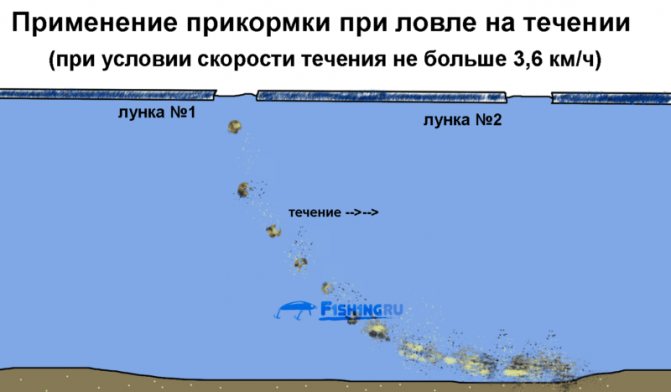
Bait for current in two holes
Winter feeding tactics
The tactics for winter feeding of bream have already been voiced. The following rules must be observed:
- Do not rely on bait, but, first of all, on finding the right place.
- Promising places are fed by one dump truck at a time. It makes no sense to place search holes nearby - it is better to cover more area. Next, where fishing is done, you should add a little bait during the process.
In stagnant water, the feed is lowered to the bottom by a dump truck; it is better not to throw balls into the hole, since due to the great depth, the spread of the feed spot will be too wide. To feed during the current, you need to use a feeder or a bag lowered to the bottom through the second hole strictly above the first. The current will wash away the bait and create a trail that attracts fish. The holes in the designs of winter feeders must be large enough so that jigs or bloodworms can leave the feeder and hide at the bottom in the fishing area.
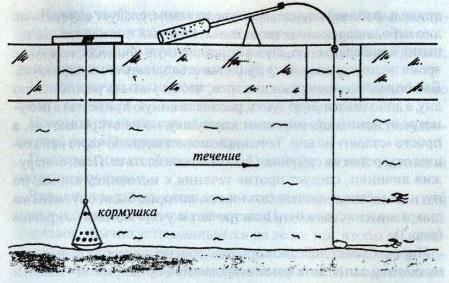
Using bait during the current
How to choose a store product?
When choosing bait for bream in a fishing store, you need to pay attention to the following:
- Specialization in bait. It is better to purchase bait specifically for catching bream.
- Seasonality of bait. The bag of bait should say that it is intended for winter fishing.
- Specialization for fishing conditions. Packages of bait may indicate the optimal conditions for its use, i.e. for fishing in currents or in still water.
- Shelf life. Groundbait is a perishable product and you should only take items that are not expired.
Recipes
Basic winter feeding for bream:
- Place a large saucepan on the fire and bring to a boil.
- Pour out a packet of millet, add salt and sugar (a little by eye). Cook over low heat with stirring. Burning must not be allowed.
- After 10 minutes (the millet should not be boiled), remove and rinse in a mesh colander under cold water.
- Add pea flour and ground rye crackers (breadcrumbs). You can add ground sunflower, flax or coriander seeds. Mix until the mixture is crumbly. At the same time, it must mold.
- You can add molasses, fenugreek, cinnamon and other flavorings or store-bought mixtures. But this is already experimental.
- Add live food bloodworms, mix gently, and make a breakdown.
This kind of bait will most likely work. The rest can only be determined experimentally in a reservoir. We will not present here hundreds of different winter recipes that the Internet is full of, recommending that you start with this simple and universal one.
Subscribe to the channel:
My YouTube channel RYBAFAN on fishing:
We're OK
Bait from the store or with your own hands?
Baits for catching bream vary in composition. There are differences for use in a particular season. Many bream anglers use purchased mixtures, which also effectively perform their function. But this pleasure costs money, and when compared with the cost of ingredients for preparing bait yourself, store-bought mixtures are more expensive. Therefore, more practical fishermen prepare their own bait for catching bream.
Also, some fishing enthusiasts believe that bait mixtures prepared at home attract fish better in their opinion.

